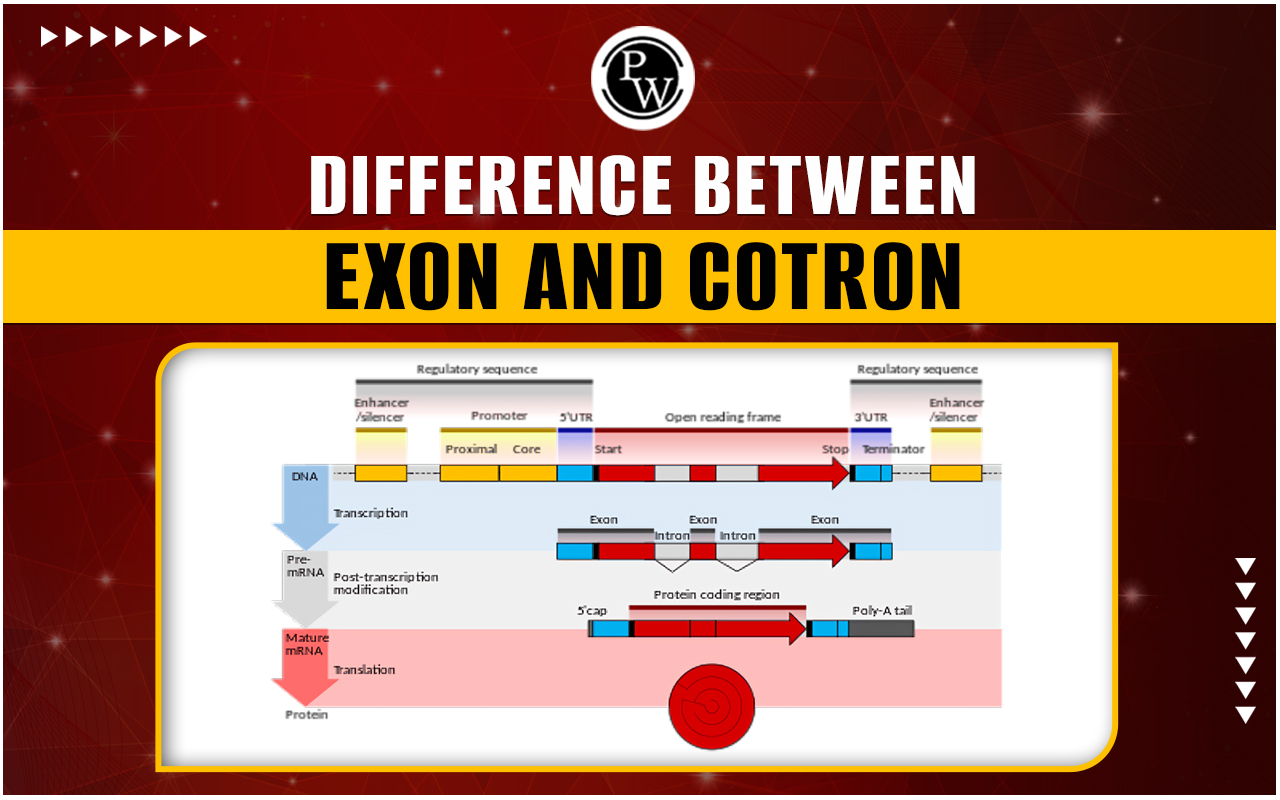

Difference Between Exon and Cistron: Exon and Cistron are two important genetic terms often used in genetics and biochemistry. Exon and Cistron have several similarities, but they also have some crucial differences. In this blog, we will discuss the definitions of Exon and Cistron, the similarities and differences between them, as well as their respective roles in genetics. We will conclude by summarizing the key points of the discussion.
Difference Between DNA and RNA
Definition of Exon and Cistron
Exon and Cistron are two genetic terms that refer to different parts of a gene.Exon
An exon is a segment of a gene that is transcribed into mRNA, which is then translated into a protein. This means that exons contain coded information that helps to determine the structure and function of a protein.Difference Between Centipede And Millipede
Cistrons
Cistrons, on the other hand, are the regions of a gene that are not transcribed into mRNA. They instead contain non-coding DNA, which is important in regulating gene expression. In summary, exons code for the structure and function of proteins, while cistrons regulate gene expression.Difference Between Diapause And Hibernation
Similarities Between Exon and Cistron
- Exon and cistron are two terms which are closely related to the genetic code of an organism. They are both essential components of the genetic code, but there are a few key differences between them.
- Exons are the coding sequences in a gene, and these sequences are translated into a functioning protein. Cistrons, on the other hand, are the portions of the gene that are transcribed into mRNA, which contains the instructions for making proteins.
- Both exons and cistrons play an important role in the production of a functional protein within the cell. While there are some differences between exons and cistrons, there are also some similarities.
- One similarity between them is that they are both necessary for the production of a functional protein.
- Another similarity is that they are both transcribed into mRNA, which is the template for making proteins.
- Finally, both exons and cistrons are essential components of the genetic code of an organism, and they play a vital role in the production of proteins.
Difference Between Deoxyribose and Ribose
Differences Between Exon and Cistron
- Exon and cistron are two different parts of the genetic code of a living organism. While the exon contains the code for protein production, the cistron contains the code for the regulation of gene expression.
- Both components are essential for the functioning of the organism. The main difference between exon and cistron lies in their purpose.
- Exon is the code that is used to produce proteins, while cistron is the code that is used to control gene expression.
- Exon is usually longer and contains the instructions for the production of proteins, while cistron is usually shorter and contains the instructions for the regulation of gene expression.
- Both components are essential for the normal functioning of the organism and the production of proteins.
Difference Between Darwinism and Lamarckism
Role of Exon and Cistron in Genetics
- Exon and Cistron are two important terms in genetics that describe different parts of the genetic code.
- Exon refers to the coding regions of a gene, while Cistron refers to the entire stretch of DNA that contains all the coding sequence, introns, and regulatory elements. Cistrons are the functional units of heredity, as they contain the entire genetic code including both exon and intron sequences.
Difference Between Cross Pollination and Self Pollination
- Exons are the coding regions of a gene that contain the instructions for making proteins and other important molecules required for cell function. They are present at the same location in the DNA sequence across different species and are usually transcribed into mRNA. Introns are non-coding DNA regions that are removed during the splicing process before mRNA is translated into proteins. They regulate gene expression by providing alternative splicing sites and by influencing the stability of the transcript.
- Both exons and cistrons are important in genetics and are essential for the proper functioning of cellular processes.
Difference Between Centipede And Millipede
Related Links -
Difference Between Exon and Cistron <span style=
What is an exon?
What is a cistron?
How is an exon different from a cistron?
What is transcription?
What is translation?
What is recombination?












